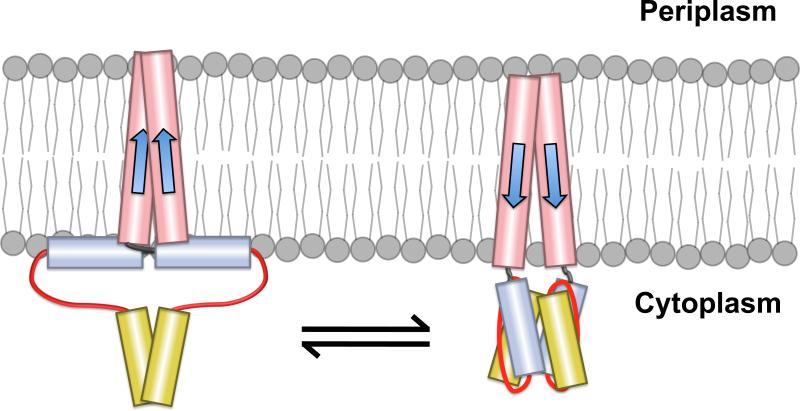Figure 8.
Modulation of AS1-membrane interactions by displacements of TM2. The helix interaction model proposes that AS1 (blue) is oriented nearly parallel to the inner leaflet of the cell membrane in one conformation (left panel) [6]. This would allow the hydrophobic surface of AS1 to interact with the hydrophobic core of the membrane and the flanking positively charged residues to interact with the negatively charged membrane surface as depicted in Figure 7B. In the alternative conformation, AS1 would not interact with the membrane, but rather with its cognate helical partner, AS2 (yellow) (right panel). Displacements of TM2 are predicted to bias this equilibrium by altering the position of AS1 relative to the inner leaflet of the membrane (right panel). The intrinsic properties, such as length and flexibility, of the control cable (black) connecting TM2 (red) and AS1 are also expected to contribute to the baseline equilibrium between these conformations.

